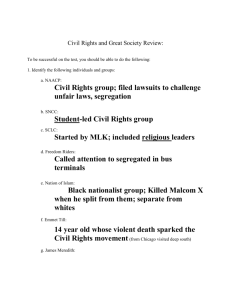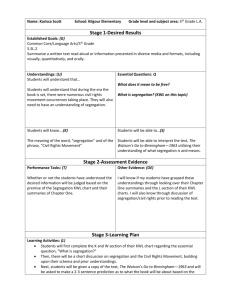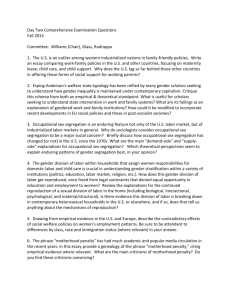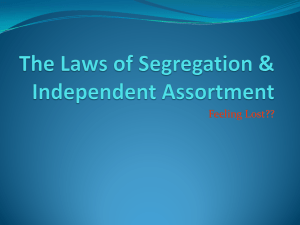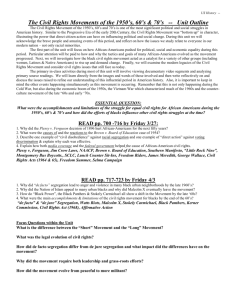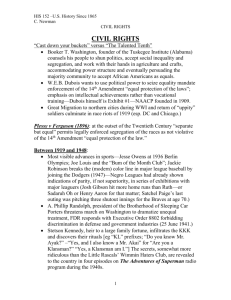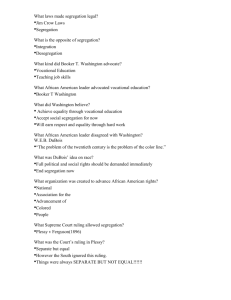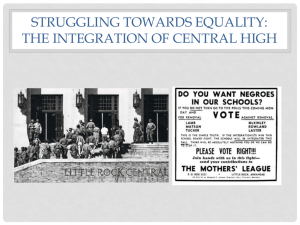Civil Rights and Beyond Study Guide
advertisement
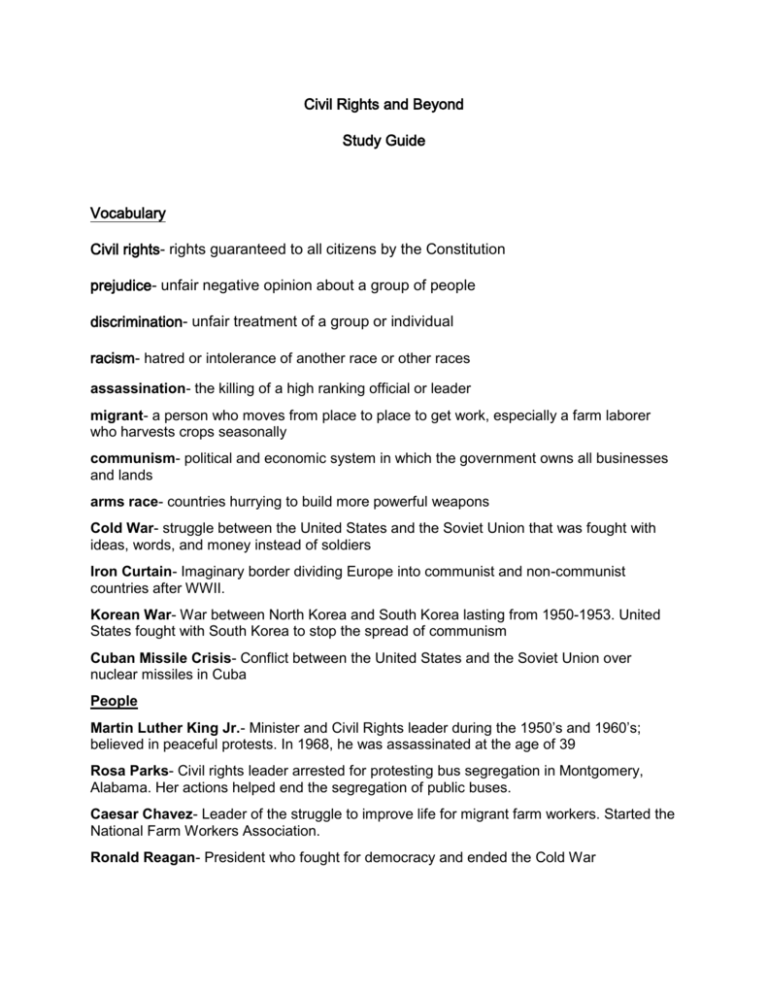
Civil Rights and Beyond Study Guide Vocabulary Civil rights- rights guaranteed to all citizens by the Constitution prejudice- unfair negative opinion about a group of people discrimination- unfair treatment of a group or individual racism- hatred or intolerance of another race or other races assassination- the killing of a high ranking official or leader migrant- a person who moves from place to place to get work, especially a farm laborer who harvests crops seasonally communism- political and economic system in which the government owns all businesses and lands arms race- countries hurrying to build more powerful weapons Cold War- struggle between the United States and the Soviet Union that was fought with ideas, words, and money instead of soldiers Iron Curtain- Imaginary border dividing Europe into communist and non-communist countries after WWII. Korean War- War between North Korea and South Korea lasting from 1950-1953. United States fought with South Korea to stop the spread of communism Cuban Missile Crisis- Conflict between the United States and the Soviet Union over nuclear missiles in Cuba People Martin Luther King Jr.- Minister and Civil Rights leader during the 1950’s and 1960’s; believed in peaceful protests. In 1968, he was assassinated at the age of 39 Rosa Parks- Civil rights leader arrested for protesting bus segregation in Montgomery, Alabama. Her actions helped end the segregation of public buses. Caesar Chavez- Leader of the struggle to improve life for migrant farm workers. Started the National Farm Workers Association. Ronald Reagan- President who fought for democracy and ended the Cold War Colin Powell- Highest-ranking American military leader during the Persian Gulf War. In 2001, became first African American secretary of state 442nd Regimental Combat Team- made contributions to society in the areas of civil rights, women’s rights, military actions, and politics How has the Civil Rights movement help achieve equal treatment for citizens? Segregation was ended and women gained new opportunities in a wide variety of areas (employment, fair pay, etc.) How did the Civil Rights movement end segregation? NAACP challenged school segregation and the Supreme Courts ruled that segregation of public schools was illegal under the Constitution. Because of the Montgomery Bus Boycott, the Supreme Court ruled that segregation of public buses was also illegal. Congress outlawed segregation in any public place How was the law changed as a result of the Civil Rights movement? Through the Civil Rights movement, the Civil Rights Act was passed. The Civil Rights Act ended discrimination/segregation in employment, promotions, firing, voter registration, usage of federal funds, and public places based on race or sex.



